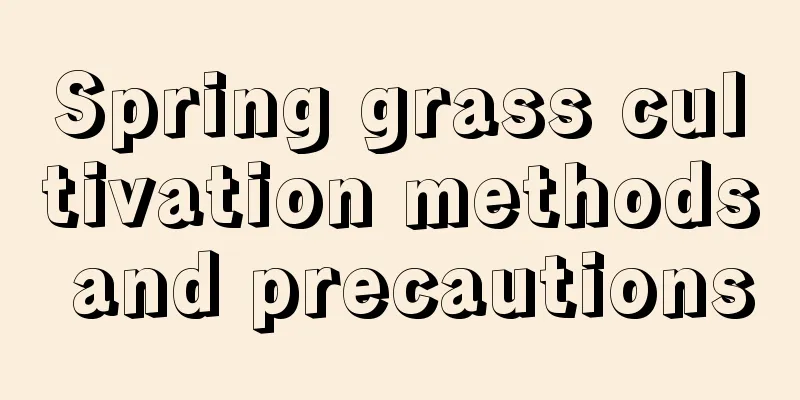How to prune climbing roses

When to prunePruning of climbing roses is very necessary. When growing climbing roses, because climbing roses grow quickly and the plants are tall, they can easily become messy, and there are too many branches that hang down to the ground. Moreover, climbing roses often need to climb on other things such as fences, railings and arches. If they are not trimmed, their shape will easily be affected. In addition, if the branches of climbing roses are too dense when growing, it will affect ventilation and light transmission, making it prone to diseases and pests, and the plant will no longer be lush and leafy. Therefore, pruning is a very important step in growing climbing roses, but in the first three years of the plant's growth, the main trunk should not be pruned first. It is better to prune after the plant shape is more stable. Winter pruningThe pruning of climbing roses is mainly winter pruning, which should be done after the growth has completely stopped. Never prune too early. To avoid frost damage. When pruning climbing roses in winter, the dense, overgrown, dead and diseased branches on the plants should be pruned away to make their distribution more reasonable. When pruning the main branches and side branches, be sure to retain the side buds, which can promote the growth of new branches and make it easier for them to climb and grow. New branches grown that year should be pruned back to the lignified parts, leaving strong buds behind. It should be noted that in order to ensure flowering in spring, light pruning is best at this time. Pruning after floweringExcept for pruning in winter, the main work at other times is pruning after flowering. Whether it is a climbing rose that blooms once or a climbing rose that blooms multiple seasons, pruning is required. The main flowering period of climbing roses is spring, when the number of flowers is the largest and the flowering is the best. After flowering, pruning is usually done between the end of June and July, mainly to prune away the branches that have already bloomed and withered. In addition, winter pruning needs to be supplemented by cutting off new branches that have grown poorly in the spring, and pruning dense branches to facilitate ventilation and light transmission of the plants. |
<<: Can I raise fish by hydroponically growing copper coin grass?
>>: How to care for Christmas cactus after flowering
Recommend
Lily ground planting maintenance method
1. Planting location Before planting lilies in th...
Water and fertilizer management techniques for Prunus mume
Watering tips for elmleaf plum Prunus armeniaca p...
These 4 kinds of flowers are too expensive, don't buy them, you can grow a big pot just by picking up a branch
Geranium cuttings Step 1 Collect some disposable ...
When is the best season to repot the iron bone orchid?
1. Time to change pots It is not recommended to r...
Hydroponic rooting of moon rabbit ears
Preparation of materials for hydroponics of moon ...
Is the pomegranate tree a shade or sun-loving plant?
Does the pomegranate tree prefer shade or sun? Th...
How to grow dragon beard orchid well
1. Giving Light It is afraid of strong light and ...
Do tulips prefer shade or sun?
Do tulips prefer shade or sun? Tulip is a sun-lov...
Cultivation methods and precautions of golden banyan
The golden banyan tree is easy to grow and can of...
How to water the red safflower
Watering tips for red safflower Salvia officinali...
When is the right time to sow broccoli?
Broccoli planting time Broccoli, commonly known a...
What are the cultivation methods and precautions of golden osmanthus
Cultivation method of golden osmanthus Golden Osm...
Do you prune the roots of clematis in winter?
1. Do you need to prune the roots in winter? Unde...
How to prune Milan after flowering
Pruning Milan after flowering The pruning time fo...
How to breed bear paw
Bear's Paw Growth Conditions Bear's Paw p...









